Colleges propose building new dorms --> Neighbors oppose new dorms because they are encroaching on "their" neighborhoods --> Colleges stop building new dorms --> Neighbors complain because colleges are not building dorms and students are living in "their" neighborhoods --> (Repeat)
You are using an out of date browser. It may not display this or other websites correctly.
You should upgrade or use an alternative browser.
You should upgrade or use an alternative browser.
Mission Hill Infill and Small Developments
- Thread starter JohnAKeith
- Start date
AmericanFolkLegend
Senior Member
- Joined
- Jun 29, 2009
- Messages
- 2,203
- Reaction score
- 219
Are college kids factored into the population of Boston?
They are supposed to be included for census purposes, but they are consistently underreported. (Who knew - transient 19-year olds don't like filling out bureaucratic paperwork?!?!).
The city/state frequently appeal census estimates on the population of Boston for this very reason.
Beton Brut
Senior Member
- Joined
- May 25, 2006
- Messages
- 4,380
- Reaction score
- 327
Colleges propose building new dorms --> Neighbors oppose new dorms because they are encroaching on "their" neighborhoods --> Colleges stop building new dorms --> Neighbors complain because colleges are not building dorms and students are living in "their" neighborhoods --> (Repeat)
Exactly.
Reminds me of this:
http://www.youtube.com/watch?v=iQjmHez44Tw&feature=related
eaalkaline
New member
- Joined
- Nov 19, 2007
- Messages
- 81
- Reaction score
- 0
I love how they use the word "cap" and then say its flexible. Pretty sure that means it's not a cap in the first place. Anyway, Northeastern certainly has some options here and they do have responsibility to the community to get back on track with their dorm plans.
Here's what Northeastern can do with the two approved dorms:
Cullinane Hall: 600 beds
Gainsborough Garage: 1000 beds
That's an increase of 1,600 beds
With the on-campus undergrad student population at about 50%, that's 7,750 students. With 1,600 more beds, that can be increased to 60%.
Now, if they build a tower comparable in size to Cullinane Hall on the St. Botolph side of the Y (which has not been proposed or approved), they could add about another 750 beds since I believe the lot has a bigger footprint than Cullinane Hall's.
That would put the on-campus population at about 10,100- or 65% of the undergrad student population.
Then the never-ending cycle begins. The neighborhood won't be happy until Northeastern hits at least the 80% mark. Should be interesting to see this develop in the coming years.
Here's what Northeastern can do with the two approved dorms:
Cullinane Hall: 600 beds
Gainsborough Garage: 1000 beds
That's an increase of 1,600 beds
With the on-campus undergrad student population at about 50%, that's 7,750 students. With 1,600 more beds, that can be increased to 60%.
Now, if they build a tower comparable in size to Cullinane Hall on the St. Botolph side of the Y (which has not been proposed or approved), they could add about another 750 beds since I believe the lot has a bigger footprint than Cullinane Hall's.
That would put the on-campus population at about 10,100- or 65% of the undergrad student population.
Then the never-ending cycle begins. The neighborhood won't be happy until Northeastern hits at least the 80% mark. Should be interesting to see this develop in the coming years.
Anyway, Northeastern certainly has some options here and they do have responsibility to the community to get back on track with their dorm plans.
They have options? Which ones? The community has a responsibility not to arbitrarily break into hysterics at every construction project proposed by the university.
And Mike Ross has a responsibility to get a clue about the businesses in his district. The university is well within the margin of error for admits.
EDIT for clarity: my point about neighbors is that even the projects you referenced are contentious when you're on the street.
What does "the community" mean if it doesn't include Northeastern and the students who move into the neighborhood?
Do you have to be a non-student to be part of a community? Are only homeowners part of "the community"? If so, doesn't the community benefit from students with money being able to rent out their apartments, given that the rental market is otherwise taking a hit (I bet plenty of neighborhood of foreclosed/abandoned homes would wish for such troubles as having lots of willing and able renters)? And if the community does extend to renters, why aren't students part of it? They're living there, the same as anyone else, so why are they discriminated against/excluded?
Do you have to be a non-student to be part of a community? Are only homeowners part of "the community"? If so, doesn't the community benefit from students with money being able to rent out their apartments, given that the rental market is otherwise taking a hit (I bet plenty of neighborhood of foreclosed/abandoned homes would wish for such troubles as having lots of willing and able renters)? And if the community does extend to renters, why aren't students part of it? They're living there, the same as anyone else, so why are they discriminated against/excluded?
eaalkaline
New member
- Joined
- Nov 19, 2007
- Messages
- 81
- Reaction score
- 0
They have options? Which ones? The community has a responsibility not to arbitrarily break into hysterics at every construction project proposed by the university.
Their options for the time being are to build the dorms that have already been approved by the task force that was created for that exact purpose. They may be contentious on the street but it's what was agreed upon.
And Mike Ross has a responsibility to get a clue about the businesses in his district. The university is well within the margin of error for admits.
Agree 100%. Mike Ross is a clown. The only valid point he raises is that Northeastern had promised to begin construction of the Cullinane Hall replacement dorm as soon as Parcel 18 finished construction. That hasn't happened yet, and it's his job to prod NU into starting it.
What does "the community" mean if it doesn't include Northeastern and the students who move into the neighborhood?
Well, the thing that makes this whole situation tricky for Northeastern is that it was not a residential campus all that long ago. It is only a recent development, and although they constructed West Village about as quickly as they could have, they haven't been able to keep up with the skyrocketing demand for housing by its students. So now there are all these students who need housing and start pouring into the communities around NU, i.e. Mission Hill. So do you blame these areas for resisting this sudden increase in demand of housing? People who have lived on the Hill for years are being forced out by rising rents. I'd be pissed too.
So now there are all these students who need housing and start pouring into the communities around NU, i.e. Mission Hill. So do you blame these areas for resisting this sudden increase in demand of housing? People who have lived on the Hill for years are being forced out by rising rents. I'd be pissed too.
Not to be an ass, but the argument I've always heard is that "decades-long homeowners" in "family homes passed from generation to generation" are being terrorized by renter-student spawns of the devil.
Last I checked, homeowners don't pay rent.
My position is that the remaining homeowners have a grievance first with absentee landlords, second with their elected officials/each other for automatically opposing any construction project, the BPD/ISD for not enforcing existing statutes in rental units (both those relating to landlords and lessors) and lastly, the students who lease whatever shit hole they find in their price range/close to their college.
JohnAKeith
Senior Member
- Joined
- Dec 24, 2008
- Messages
- 4,319
- Reaction score
- 57
As good a thread as any ...
Every year, the Dukakis Center for Urban and Regional Policy at Northeastern University issues a "Greater Boston Housing Report Card", which analyzes the state of housing in ... Greater Boston.
In past years, the center, under the guidance of Professor Barry Bluestone, has raised the alarm on the high cost of housing as the primary reason many young professionals leave Boston for other cities.
This year, it appears that they have focused on a different problem - the increased number of undergraduate and graduate students living (off-campus) in Boston. As a result of this increase, their theory is that the cost of housing for the rest of us is higher than it would be, due to limited (and constricted) supply.
The Boston Globe had an article on the housing report, today, and City Council President Michael Ross also wrote about it on his constituents' blog.
[Oh, and I disagree with just about everything they say, for various reasons, but will wait until after the report is published online and released after a public forum, this coming Thursday.]
Thoughts?
The Ross Report
Tuesday, October 12, 2010
The Boston Foundation on Housing Gridlock
Signs of trouble
Stubborn economic woes, rising rents strain housing market?s recovery
By D.C. Denison
Boston Globe / October 12, 2010
Every year, the Dukakis Center for Urban and Regional Policy at Northeastern University issues a "Greater Boston Housing Report Card", which analyzes the state of housing in ... Greater Boston.
In past years, the center, under the guidance of Professor Barry Bluestone, has raised the alarm on the high cost of housing as the primary reason many young professionals leave Boston for other cities.
This year, it appears that they have focused on a different problem - the increased number of undergraduate and graduate students living (off-campus) in Boston. As a result of this increase, their theory is that the cost of housing for the rest of us is higher than it would be, due to limited (and constricted) supply.
The Boston Globe had an article on the housing report, today, and City Council President Michael Ross also wrote about it on his constituents' blog.
[Oh, and I disagree with just about everything they say, for various reasons, but will wait until after the report is published online and released after a public forum, this coming Thursday.]
Thoughts?
The Ross Report
Tuesday, October 12, 2010
The Boston Foundation on Housing Gridlock
This week, the Boston Foundation will release a report on the state of the Greater Boston real estate market, authored by Professor Barry Bluestone of Northeastern University. As the Boston Globe reports, our area?s housing market will continue to struggle due to the lingering economic problems from the recession. But it also acknowledges the pressures being put on our housing market because of the skyrocketing population of off-campus students.
In the fall of 2009, there were 336,000 post secondary students living in Boston, with more than half living off campus, Bluestone said. That?s up from 290,000 in 2001. If the trend continues, there will be 400,000 students living in Greater Boston by 2020.
?If we don?t create more housing for them, they will have an even greater impact on the rental housing market,?? Bluestone said.
Housing gridlock is reaching a crisis point in Boston. Colleges and universities need to build more on-campus housing for undergraduates to open up more apartments for recent graduates and young families. In order for Boston to compete, we need to keep the smart and innovative graduates of our world-class schools here, and support them as the launch the companies that will drive the economy out of the recession and maintain Greater Boston?s reputation as a leader in technology, education, and business of all kinds.
To hear more about the Greater Boston Housing Report Card 2010, please RSVP for a public discussion of the report at the Boston Foundation (75 Arlington St., Boston) on Thursday, October 14 at 8:30 a.m. To reserve your seat, please email the foundation at rsvp@tbf.org, or call the Foundation at 617-338-1700 for more details.
Signs of trouble
Stubborn economic woes, rising rents strain housing market?s recovery
By D.C. Denison
Boston Globe / October 12, 2010
The Boston Foundation report says the region?s housing market could get battered from two directions, with continuing economic woes depressing house prices and driving up foreclosures, and Boston?s burgeoning student population pushing up rents.
Barry Bluestone, director of the Kitty and Michael Dukakis Center for Urban and Regional Policy at Northeastern University and lead author of the report, said the Boston housing market was showing signs of emerging from the recession during the last half of 2009 and the first half of 2010; however, that progress could be threatened by a continuing weakness in the overall national economy.
Bluestone cited ?disconcerting developments?? nationwide, including the gross domestic product numbers, which fell sharply in the second quarter, and the growing ranks of the unemployed nationwide ? both trends that threaten the troubled housing market.
Through July of this year, new home sales in the United States were running 8 percent below the same period last year, and 33 percent below 2008 levels. But with the end of the federal first-time home buyer tax credit in July, home sales nationally dropped 27 percent, double the consensus forecast. Foreclosures and bank repossessions nationwide have been running at record levels in 2010.
Bluestone said there are ?too many disconcerting statistics that point to a continued weakness in the overall economy and the housing market.??
Both Greater Boston and Massachusetts appear to be doing better than the nation as a whole on a range of economic indicators. For example, as of August, when the US unemployment rate was 9.6 percent, it was at 8.8 percent in Massachusetts. But, Bluestone said, ?We are not an island unto ourselves. If the national economy continues to suffer, we will suffer its tailwinds.??
Despite the sluggish economy, ?anemic?? new housing construction and a steady rise in student population have combined to drive rental prices ?near their all-time high,?? according to the Boston Foundation report. Normally, low vacancy rates and high rental prices occur in a strong economy; to have both in a weak economy is unusual, Bluestone said.
The rising cost of rental housing in Greater Boston is one of the major themes of the Boston Foundation study, its eighth annual Housing Report Card.
Bluestone said a number of factors are driving rents higher in the area. Many people who were evicted from foreclosed homes are now renting, and as credit remains tight, people are finding it harder to qualify for mortgages and make the transition from renting to home ownership. Finally, and most significantly, a boom in Greater Boston?s student population has swelled the market for rental apartments.
?The biggest rise is in graduate students,?? Bluestone said, ?and they are the students who are most likely to live off campus.??
The Boston City Council?s president, Michael P. Ross, whose district includes the Back Bay, Beacon Hill, and the Fenway, said he has noticed the widening impact of students on housing. Some Boston neighborhoods are ?now being gridlocked?? by student housing, he said.
?The institutions have to develop more housing on campus,?? he said, ?and I?d like to see the private market develop more housing for students.??
Bluestone also said more student housing, perhaps in villages, will be needed if Boston wants to stay ahead of the influx.
In the fall of 2009, there were 336,000 post secondary students living in Boston, with more than half living off campus, Bluestone said. That?s up from 290,000 in 2001. If the trend continues, there will be 400,000 students living in Greater Boston by 2020.
?If we don?t create more housing for them, they will have an even greater impact on the rental housing market,?? Bluestone said.
The housing market is also under pressure in suburban communities, said Laurie Cadigan, owner of the real estate firm Barrett & Co. in Concord and president-elect of the Massachusetts Association of Realtors. Cadigan said that the lack of construction has affected the availability of ?workforce housing?? in the communities that she serves, which include Concord, Lincoln, Carlisle, and Arlington.
?There are a lot of properties available for over $1 million,?? she said. ?But it?s much tougher to find properties in the $200,000 to $500,000 range.??
Cadigan also said she?s seen an increase in activity this fall as many sellers, still concerned about the economy, are ?abandoning their wait-it-out strategies and setting more realistic prices.??
D.C. Denison can be reached at denison@globe.com.
KentXie
Senior Member
- Joined
- May 25, 2006
- Messages
- 4,185
- Reaction score
- 744
Simple solution: Build more housing, whether by universities or the city. It does not really matter which. Those who complain about the high rent AND high-rise dorms (or residential towers) being developed in their neighborhoods should be ignore because not only are they stalling solutions, they are not alleviating the situation by coming up with a better answer to the problem.
Simple solution: Build more housing, whether by universities or the city. It does not really matter which. Those who complain about the high rent AND high-rise dorms (or residential towers) being developed in their neighborhoods should be ignore because not only are they stalling solutions, they are not alleviating the situation by coming up with a better answer to the problem.
"B-b-b-b-b-but, the SHADOWS!" /clutches pearls, faints
AmericanFolkLegend
Senior Member
- Joined
- Jun 29, 2009
- Messages
- 2,203
- Reaction score
- 219
In the fall of 2009, there were 336,000 post secondary students living in Boston, with more than half living off campus, Bluestone said. That?s up from 290,000 in 2001. If the trend continues, there will be 400,000 students living in Greater Boston by 2020.
Ummm . . . so the population of college students increased 1.8% per year and that's somehow devastating? And that doesn't take into account the fact that hundreds (thousands?) of student housing units have been built during that period. And guess what? The job market sucks so college and grad school enrollment is up all over the country.
Does the Boston Foundation or Professor Barry Bluestone have an agenda in this case (beyond rocking an awesome porn name)?
JohnAKeith
Senior Member
- Joined
- Dec 24, 2008
- Messages
- 4,319
- Reaction score
- 57
Wigglesworth St, Mission Hill, Boston, Massachusetts
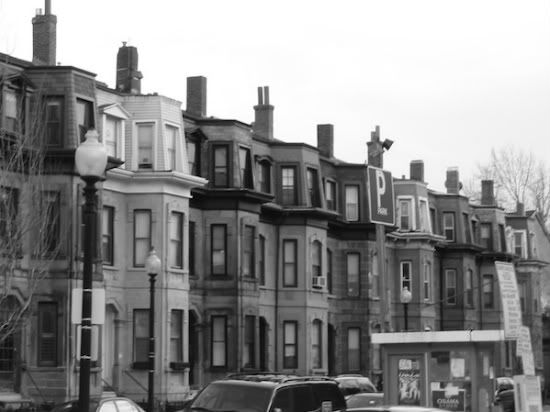


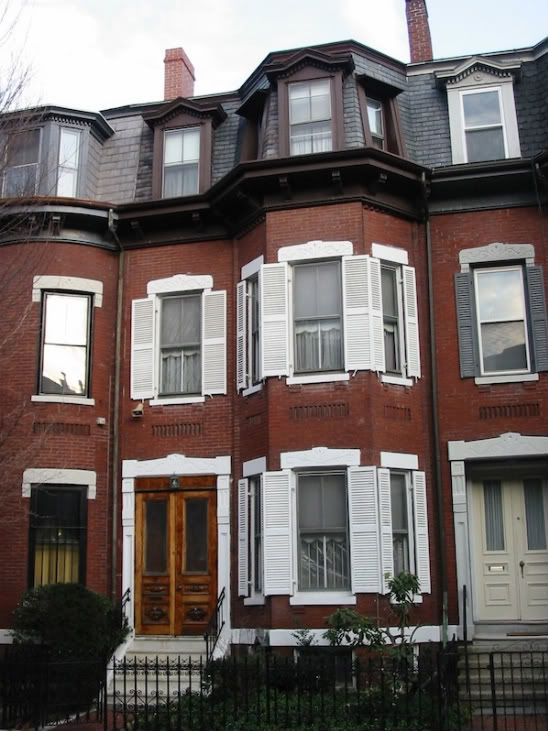
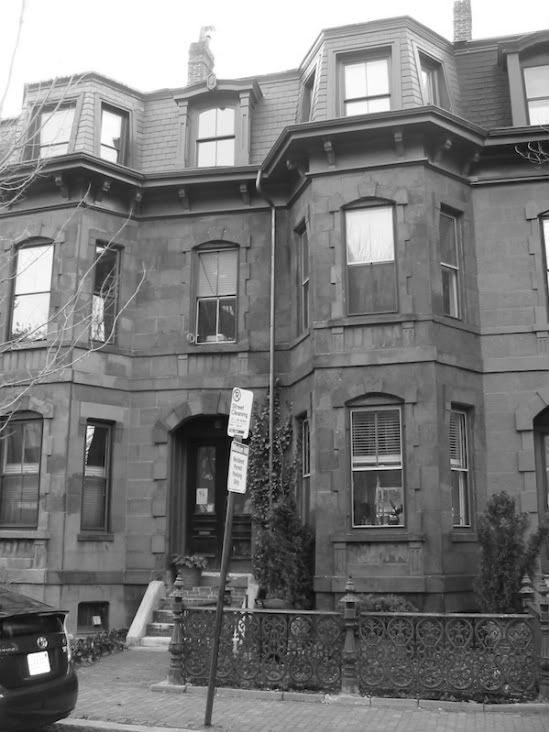
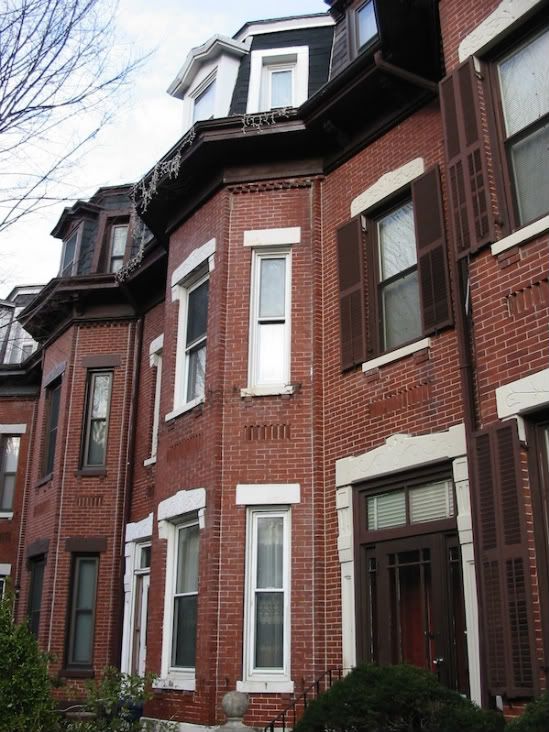


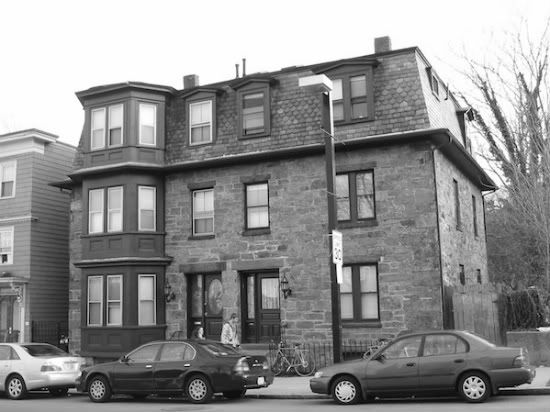









Last edited:
- Joined
- Sep 15, 2010
- Messages
- 8,894
- Reaction score
- 271
This is Worthington. It really is one of my favorite parts of this city. It's picturesque every day of the year, rain, snow, or sun shine. My apartment has such beautiful details from the 40s from the window mouldings, the hexagon tile bathroom floors, claw foot tub, hardwood throughout. My decision was instant.
Even the Street View is stupidly beautiful: http://maps.google.com/maps?q=Worth...=IuqVroELH73RXLFXPLIuwQ&cbp=12,28.65,,0,-7.45
Lurker
Senior Member
- Joined
- Jun 13, 2006
- Messages
- 2,362
- Reaction score
- 0
This is Worthington. It really is one of my favorite parts of this city. It's picturesque every day of the year, rain, snow, or sun shine. My apartment has such beautiful details from the 40s from the window mouldings, the hexagon tile bathroom floors, claw foot tub, hardwood throughout. My decision was instant.
Even the Street View is stupidly beautiful: http://maps.google.com/maps?q=Worth...=IuqVroELH73RXLFXPLIuwQ&cbp=12,28.65,,0,-7.45
So nice that the BRA thought it would be a wonderful idea to demolish half of those streets to build the two criminally ugly highrises on that stretch. Too bad architects and planners are so cowered by their peers and academia to draw anything like this either.
Ron Newman
Senior Member
- Joined
- May 30, 2006
- Messages
- 8,395
- Reaction score
- 9
Did the BRA do that, or private developers?
- Joined
- Sep 15, 2010
- Messages
- 8,894
- Reaction score
- 271
So nice that the BRA thought it would be a wonderful idea to demolish half of those streets to build the two criminally ugly highrises on that stretch. Too bad architects and planners are so cowered by their peers and academia to draw anything like this either.
They only eliminated one street (Whitney St) to build the 3 highrises in the Whitney Redevelopment Project. It completely ruined the nice little grid we had going here.
Refer to the Brigham Circle thread for more info.
- Joined
- May 25, 2006
- Messages
- 6,963
- Reaction score
- 1,584
Did the BRA do that, or private developers?
Well the BRA set it up as an urban renewal zone but private developers built the towers. So it was the system that screwed us.
DominusNovus
Senior Member
- Joined
- Jun 20, 2010
- Messages
- 1,015
- Reaction score
- 128
The building at 800 Huntington Ave is pretty close to completely demolished.
Here's the most recent article I've seen on the building:
http://missionhillgazette.com/2011/06/03/construction-date-for-800-huntington-ave-set/
Has anyone seen a render of the project?
Here's the most recent article I've seen on the building:
http://missionhillgazette.com/2011/06/03/construction-date-for-800-huntington-ave-set/
Has anyone seen a render of the project?

